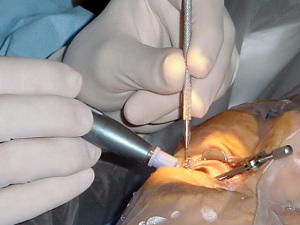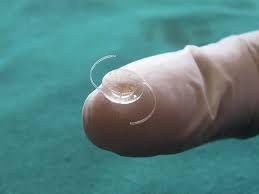Back to basics – all about cataract surgery
What is cataract surgery?
Modern day cataract surgery is the removal of the cloudy lens of the eye, and insertion of a new, clear intra ocular lens (IOL). Cataract surgery is the most common, and the most effective, surgery of any medical surgery performed on humans worldwide.
How do i know if I need cataract surgery?
This is a personal decision, and there is no blanket rule for everyone. Generally, the best time to have surgery is when the cataract starts to impact on your daily activities, or your ability to work. Depending on the visual needs of your work or your daily activities, the timing of cataract surgery can vary greatly. If you have a visually demanding occupation such as a driver or a photographer, you may need to consider cataract surgery earlier than someone who does not have a visually demanding occupation.
When you first notice a change in your vision, it is important to see an ophthalmologist or optometrist for an expert opinion. Once you have been diagnosed with a cataract, your ophthalmologist will give you an idea as to when it would be best to have surgery. The decision to proceed with cataract surgery is only made after careful, considered discussion together with your ophthalmologist.
Is cataract surgery really necessary?
This all depends on the type of cataract you have, how advanced it is, and how much it is impacting on your ability to work and carry out your daily activities. Cataracts can eventually lead to blindness if left untreated, and cataracts that have become very dense and mature are more difficult to treat successfully. Cataracts are the leading cause of preventable blindness worldwide. There is no medical treatment to prevent the development or slow the growth of cataracts. Cataract surgery is the only treatment available. Your ophthalmologist is the most qualified person to tell you whether surgery is necessary for your cataracts.
What do I need to know about cataract surgery
Routine cataract surgery usually takes about 45 minutes per eye, and is a very commonly performed day surgery. For most patients, there is no need to stay overnight in hospital. The preparation before the surgery, and recovery immediately after the surgery, take more time than the surgery itself.
Adult cataract surgery is usually performed with local anaesthetic and sedation. This means you do not have to have a general anaesthetic, and allows for quicker recovery after the cataract surgery.
Cataract surgery is usually performed on one eye at a time, and the cataract surgery for the fellow eye is scheduled at a later date. This is to ensure the second surgery is performed after the results of the first eye are known.
After surgery, a patch will be placed over the operated eye. The patch is to protect the eye from bumps, knocks and debris. You will normally have an appointment with your ophthalmologist the day after surgery, at which time the eye patch will be removed.
Because you have undergone a surgical procedure with sedation and anaesthetic, and because one eye will be patched following the cataract surgery, you are not allowed to drive for 24 hours following the surgery. This means you will need to organise someone to take you home following the cataract surgery, and someone to escort you to your post-operative appointment with your ophthalmologist the day after surgery.
What exactly happens during cataract surgery?
Topical anaesthetic is applied to the eye using eyedrops. You are then given a relaxing sedative, which makes most patients doze through the surgery. Then a local anaesthetic is injected, or an anaesthetic rinse is used to anaesthetise the eye. During cataract surgery, a very small (3mm) incision known as a micro incision is made at the edge of the cornea (corneal incision). A small ultrasound probe is inserted through this incision, and in to the lens capsule to break up the cataract. The cataract is then suctioned out using this probe (phacoemulsification). The clear lens capsule is left behind. The flexible IOL is folded and inserted through the micro incision and placed in the clear lens capsule.
Modern cataract surgery can be performed manually, or with the assistance of femtosecond laser (known as laser cataract surgery). In manual cataract surgery, each of the steps are carried out by the ophthalmologist. In laser cataract surgery, the femtosecond laser performs the first three steps of cataract surgery (corneal incision, capsulorhesis and phacoemulsification). The laser combines these three steps in to one step, and is used for less than 60 seconds during cataract surgery. Laser cataract surgery minimises the risk, and optimises visual outcomes post-operatively. When choosing laser cataract surgery, our cataract surgeons chose to use the LensAR femtosecond laser at Chatswood Private Hospital. Your ophthalmologist will discuss whether manual cataract surgery or laser cataract surgery is best for you.



